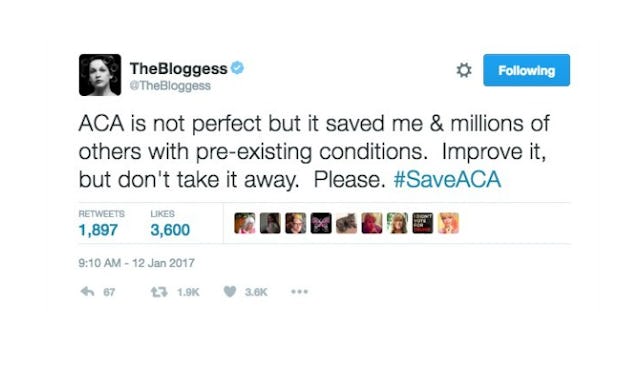Senate Vote To Repeal ACA Is A Crisis Situation For Patients With Pre-Existing Conditions

Late Wednesday night, nine days before Donald Trump takes office, Senate Republicans voted to begin dismantling the Affordable Care Act (ACA) in a move which has left millions of Americans, many of whom live with pre-existing health conditions, worried about the future affordability of U.S. health care.
The ACA, also know as Obamacare, creates a marketplace where people can buy individual insurance plans. It also protects people living with pre-existing conditions, requiring insurers to provide coverage to everyone regardless of past or present health conditions; allows people to stay on their parent’s plan until they turn 26; removes lifetime maximums; and prohibits insurance companies from charging women more than men for their plans.
Obamacare has also set up requirements mandating calorie counts in restaurant chains, breastfeeding rooms at workplaces, and habilitative care care coverage for children with autism.
Last night’s vote, a Senate budget vote, begins the long process needed to repeal the ACA. During the vote, Senate Democrats came forward with amendments that would keep parts of the ACA intact, even after its repeal. According to Dan Diamond of Politico, every Democrat-backed amendment was voted down, including those that would allow children to stay on their parent’s plan until the age of 26, keep protections for people living with pre-existing conditions, and maintain insurance coverage of contraceptives. These amendments were ignored, despite previous statements from Donald Trump that suggest he favors keeping pre-existing condition coverage and keeping children on their parents’ plan until they turn 26.
The vote, which needed 50 votes to pass, received all of its votes from Republican senators, with the exception of Rand Paul (R-KY), who voted against the resolution along with all of the Senate Democrats and Independents who voted that night.
With the process to repeal Obamacare in motion, many have taken to social media to share their concerns and fears. Here’s what they have to say:
This article was originally published on